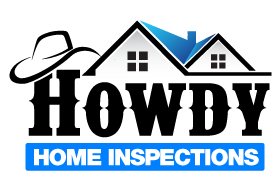Howdy y’all,
A heat exchanger is a chamber in a furnace that’s responsible for warming the air that heats your house. The chamber capitalizes on the concept of surface area by snaking the path that exhaust has to take, from the time it enters the chamber until it the time it exits. So while a heat exchanger may only be two and half feet tall, the exhaust may have to travel ten feet before it exits the unit. By snaking the heat exchanger like this, it increases the amount of heat that can be produced before the exhaust escapes to the outdoors.
These days, higher efficiency furnaces have two heat exchangers, which can even further maximize the amount of air that can be heated by exhaust. Heat exchangers use the hot exhaust that’s inside the chamber to heat the metal of the exchanger, which in turn heats the air that blows across the super hot, exterior part of the chamber. The heat exchanger is responsible for keeping the “fresh air” and “exhaust gas” separate…. This is until the heat exchanger cracks. When this happens, things can become dangerous very quickly. I spoke about the dangers of carbon monoxide here.
All heat exchangers may eventually crack. As metals heat and cool over time, they develop stress points that can eventually weaken to the point of cracking. At first, these cracks can be so small that not enough carbon monoxide can escape into the “fresh air” to be considered dangerous. However, since heat exchangers keep the exhaust on the inside from mixing with the “fresh air” on the outside, any hole in the metal is a cause for serious concern. Eventually these cracks will get larger and begin to displace the combustion air that a furnace requires to operate properly. When this happens, the furnace will start to burn it’s own exhaust, instead of the “fresh air” that it was designed to burn. The result is incomplete combustion and deadly carbon monoxide in the exhaust.
Let me explain why carbon monoxide is so dangerous.
CARBON MONOXIDE KILLS BY SUFFOCATION
Oxygen is transported through our bodies by hemoglobin, which is found in our red blood cells. As oxygen is inhaled through our lungs, it binds to the chemically compatible hemoglobin to produce oxyhemoglobin. This oxygenated blood is then carried from our lungs to all the tissues in our body via our bloodstream. While hemoglobin and oxygen are chemically compatible compounds, the bond they form isn’t nearly as strong as the bond formed between carbon monoxide and hemoglobin.
The bond formed by carbon monoxide and hemoglobin is 240 times stronger than that of oxygen and hemoglobin. This bond is so strong that carbon monoxide and hemoglobin will never naturally separate in your body. This is why carbon monoxide levels are always cumulative. Once you inhale it, your body will never be able to get rid of it and your levels will never return to their lower levels.
When I say that carbon monoxide kills by suffocation that’s exactly what happens. If oxygen and carbon monoxide are both inhaled, hemoglobin will always choose to bind to carbon monoxide first, because the elements of each compound are more chemically attracted to each other. If all the hemoglobin binds to carbon monoxide, then oxygen has no way to be transported throughout your body. At this point your body becomes starved of oxygen and you literally suffocate to death.
So that’s the scoop on heat exchangers and carbon monoxide. We learned why electricity is so dangerous in my electrical problems post here . Now we see why cracked heat exchangers can equally as dangerous. Most people don’t realize how dangerous systems of a house can be when they’re not functioning properly. If you suspect you have furnace that’s not functioning as intended, please call a licensed Heating and Air specialist to have it evaluated.
Be Happy and Be Kind,
T.J. Thorne


